
New Photos
December 17, 2006
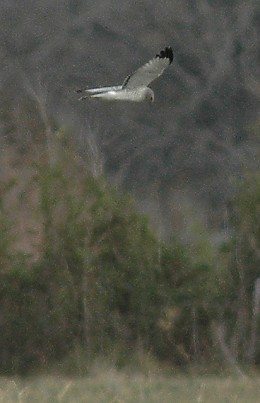 |
|
| A male northern harrier courses over this field about six or seven feet in the air. Often harriers fly so low that they can snatch prey from the ground just by extending their legs. | |
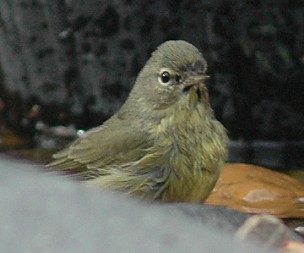 |
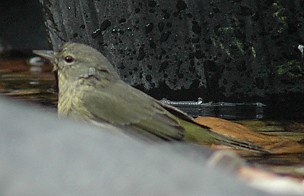 |
| Orange crowned warbler. I will never understand the naming of warblers. This species, which ranges from grayish in the east to more olive and yellow in the west, never shows its "orange crown" to the casual viewer. They have vague streaks on the breast, but this fellow is so spiky from a bath that you can't see them. | Here's another view of the Orange-crowned Warbler, when it had just started bathing. The smooth, unmarked olive back and wings are clear, and so is the broken faint eye-ring. |
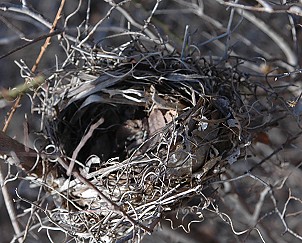 |
|
| Winter mowing of our smallest "pocket prairie" reveals this well-made nest about 16 inches up in a stunted cedar elm. What nested here? I don't know. | |
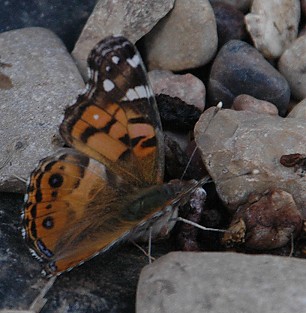 |
|
| It's late in the season for an American Lady, Vanessa virginiensis, to be out...here it's drinking at Owl Water. Another Vanessa, a Red Admiral, flew past the next day, but I didn't get a photograph of that one. | |
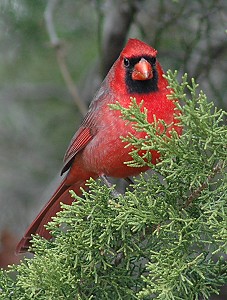 |
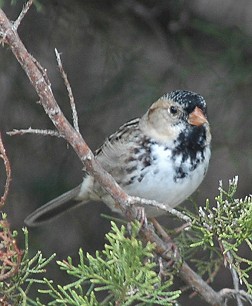 |
| Posing for a holiday greeting card...cardinals are such photogenic birds. | When a Harris's Sparrow finds a similar background, it too can look especially photogenic. One thing I've noticed is that the Harris's have carrot-colored bills that really show up in shadow. I can now sometimes spot a shy Harris's by its bright orange bill moving through the shadows of a cedar. |
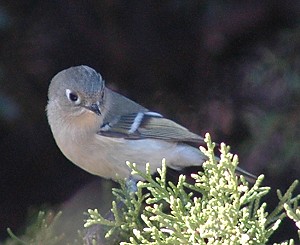 |
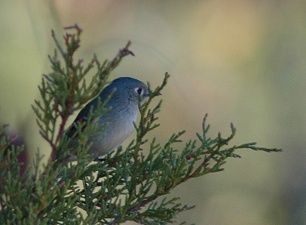 |
| Ruby-crowned Kinglets (like Orange-crowned Warblers) very rarely show their red "crown" feathers. They are charming little birds, but very flittery and twitchy, a frustration to the photographer because they won't stay put long enough to get them in good focus. Whether they look greenish or gray depends on the quality of light at the moment. Their eyering, visible at a distance, is wider to the front and rear, rather than being even all the way around. | Another view of the same bird...sometimes I just have to be artsy. |
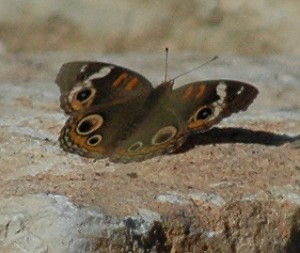 |
|
| I didn't expect to see a fresh-looking Common Buckeye, Junonia coenia, show up in mid-December after several hard freezes. But here it was, spreading its wings to the sun on a warm rock. | |
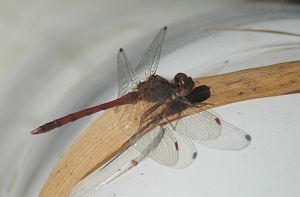 |
|
| Even less than the Common Buckeye did I expect to see a dragonfly of any kind...but this male Yellow-legged Meadowhawk, Sympetrum vicinum, was actively defending the stream at Owl Water from wasps, flies, butterflies...and (unsuccessfully) tried to drive off even small birds. | |
![]()

